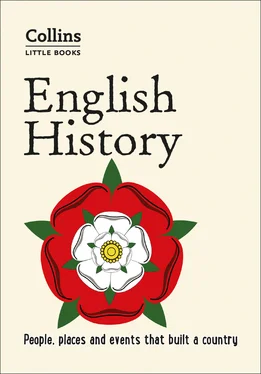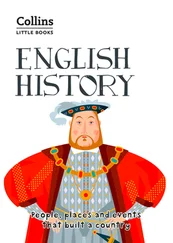Any book on the history of England will encounter difficulty negotiating England’s appearance, and then disappearance, as a single political unit. England only emerged as one country, governed by one ruler, during the reign of Alfred the Great’s grandson, King Athelstan. If you were to pinpoint England’s birthdate, then King Athelstan’s victory against the Vikings at the Battle of Brunanburh in ad 937 is perhaps the best contender. For this reason, this book gives relatively brief treatment to the history of ‘England’ prior to 937, offering a brief outline of the prehistoric, Roman, and early Anglo-Saxon periods in order to set the scene for England’s emergence during the 10th century.
England’s status as a sovereign state ended in 1707, when the Act of Union fused England and Wales with Scotland to form a new nation: Great Britain. From this point onwards in the book, I cease to write so often of ‘England’, as so many actions – in particular the creation of a global Empire – were really carried out by Britain. However, even though England ceased to be a sovereign state in 1707, it remains a country, with distinct traditions, culture, and – perhaps most importantly! – international sports.

10,000 BC | Prehistoric England
Around 12,000 years ago, the last Ice Age ended, and the British Isles once again became inhabited by humans. No written records of life in England exist from before the Roman invasion in 55 BC, so prehistoric England is a mysterious and unknowable place. But prehistoric Britons did leave their mark in other ways. Some lived in earthwork defensive settlements such as Maiden Castle in Dorset, some left behind enormous burial mounds for the dead. Prehistoric Britons were also skilled metalworkers, creating beautiful jewellery out of twisted gold thread. Tribal leaders would wear a thick golden ring called a ‘torc’ around their neck. There are also the remains of up to 900 stone circles built by prehistoric Britons, thought to have been used for religious and ceremonial purposes.
The warrior culture in prehistoric Britain can be seen from the swords, spears, shields and helmets uncovered by archaeologists. We also know that warriors rode horses and used chariots for battle. Two of the greatest artefacts uncovered dating from this period were found in the River Thames in London: a ceremonial bronze horned helmet found beside Waterloo Bridge, and a beautiful ceremonial shield decorated with coloured red glass, which was found in the Thames at Battersea.
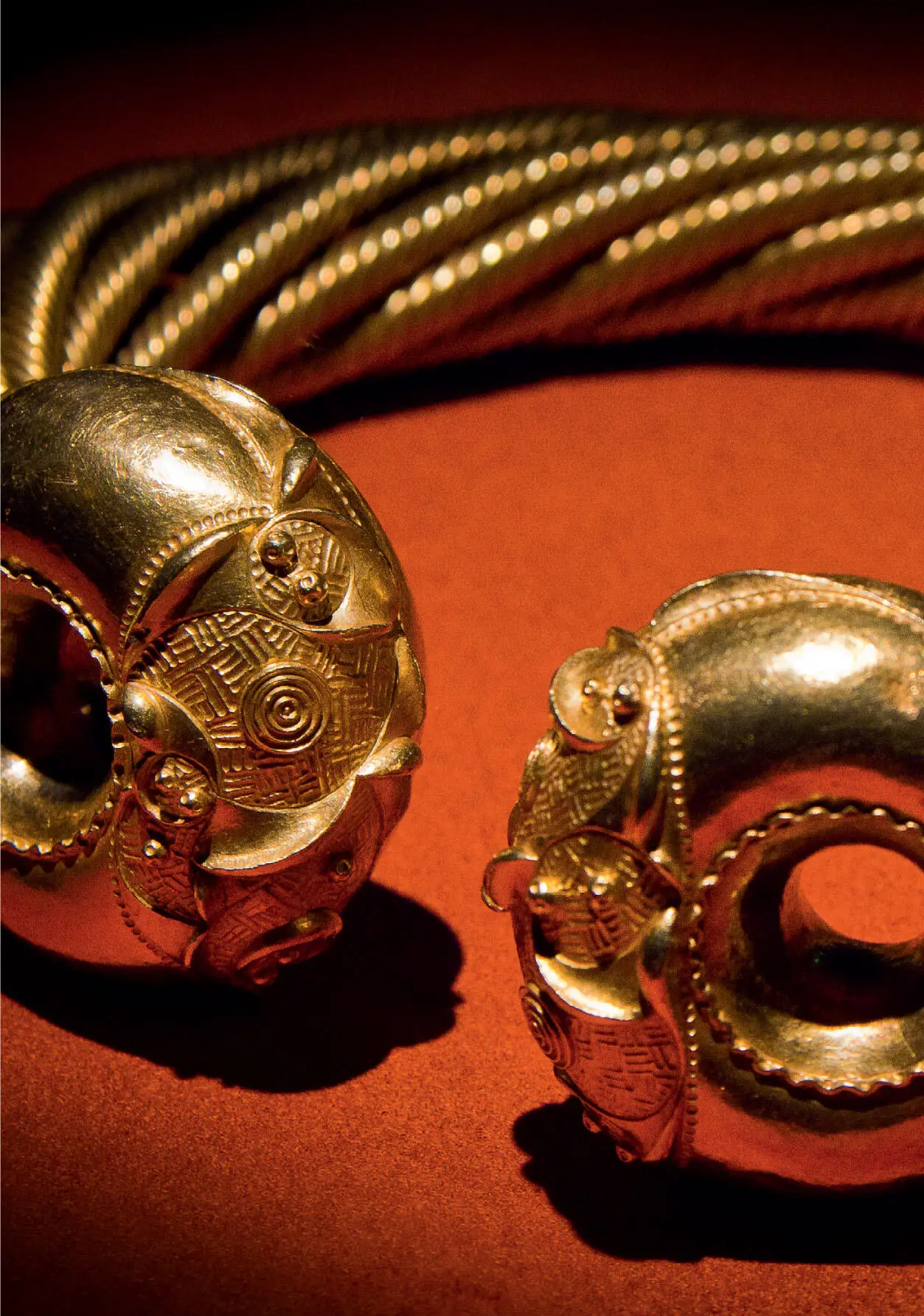
Jason Benz Bennee
3,000 BC | Stonehenge
The most famous monument from prehistoric England is Stonehenge in Wiltshire. The first stage of its construction began in 3,000 bc, and it originally consisted of eighty-two stones arranged in two rings. Extraordinarily, these stones – which weighed up to four tonnes each – are thought to have been dragged to Wiltshire all the way from South Wales. Most of Stonehenge as we see it today was constructed from stones brought from 19 miles away in the Marlborough Downs. The heaviest stone weighs fifty tonnes, and would have required 500 people to drag it on rollers and sledges to Stonehenge.
Inside Stonehenge, archaeologists have uncovered pits containing pieces of flint and red clay, probably used as religious offerings. Some of these pits contained the cremated remains of people. In addition, there are numerous Bronze Age burial mounds nearby, often placed on high ground overlooking the monument. Stonehenge was clearly a site of great religious and ceremonial importance, perhaps used for funeral ceremonies. Some archaeologists believe Stonehenge was used to observe the movements of the sun and the moon, with special ceremonies held at the monument on the Summer and Winter solstices (the longest and shortest days of the year).

Kevin Lavorgna
AD 43 | The Romans
By the 1st century bc, Roman civilisation was reaching its zenith, and the Roman Empire spread across Western Europe to the Middle East and North Africa. Meanwhile, Britain remained a prehistoric civilisation, inhabited by a people sometimes referred to today as ‘Celts’. The first Roman to lead an expedition to Britain was the Governor of Gaul, Julius Caesar. In 54 BC, Caesar invaded Britain with an army of around 37,000 troops and won the surrender of its Southern tribes. However, Caesar had to return to Italy, and his conquest of Britain was left incomplete.
A century later in AD 43, the Roman Emperor Claudius set his sights on conquering Britain, in part to gain possession of its wealthy gold, silver and tin mines. An invasion force of 40,000 Roman soldiers landed in Britain, which Emperor Claudius later joined with a force of elephants – intended to scare the Britons into submission! For the next four centuries, Roman power spread across England and Wales, all the way to Hadrian’s Wall near today’s border with Scotland. Some remains of Roman rule can be seen today in locations such as Fishbourne Palace in West Sussex, Porchester Castle in Hampshire, and the beautiful Roman baths in Bath.
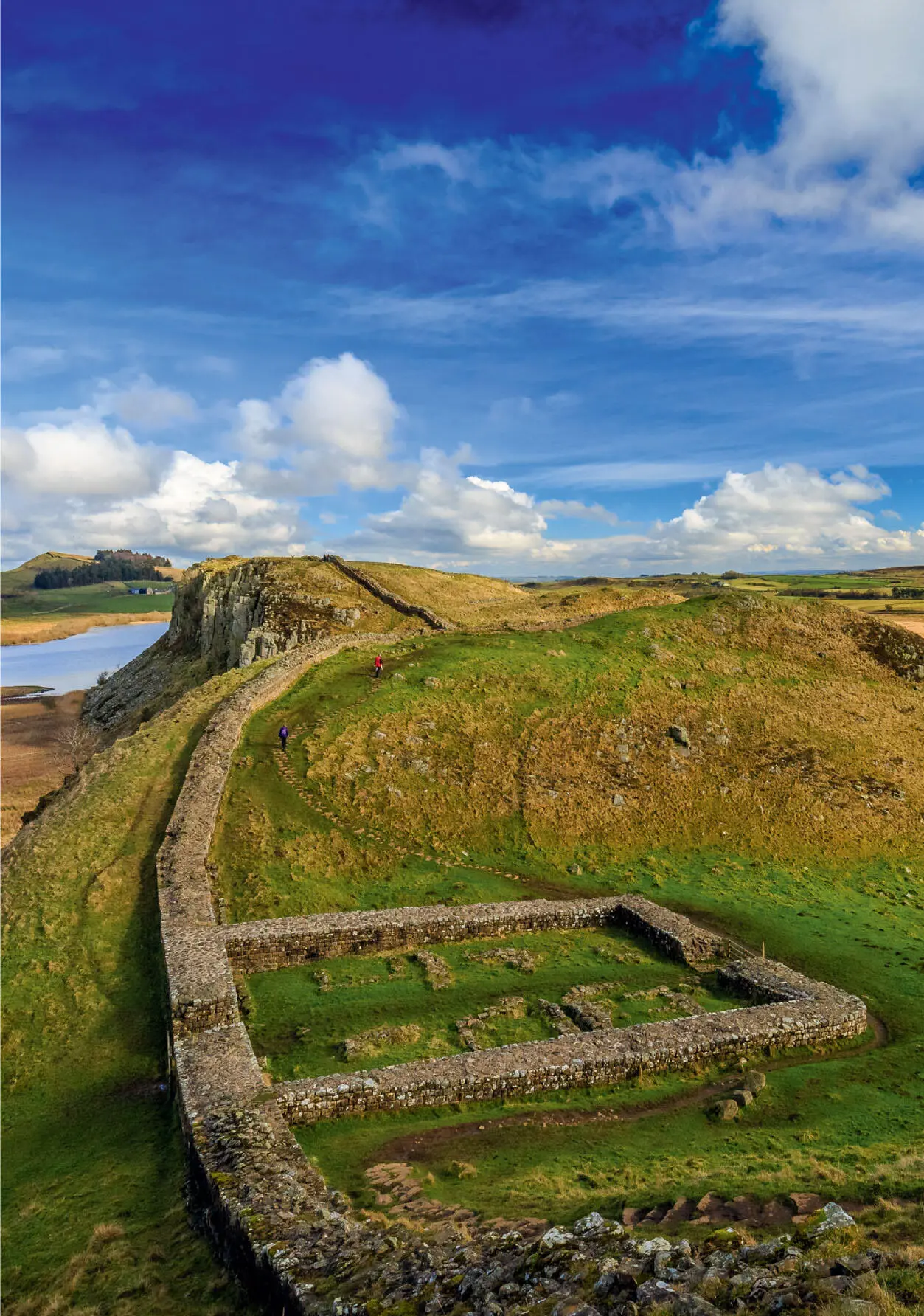
Michael Conrad
AD 61 | Boudicca
It was only during the 16th century that the story of Boudicca, the famous warrior queen, was uncovered in the writings of the Roman historian Tacitus. Boudicca was the Queen of the Iceni tribe in modern-day Norfolk. The invading Romans were unwilling to respect the authority of a female leader, so they confiscated Boudicca’s land, publically beat her, and – worst of all – raped her two daughters. Boudicca was outraged, and her Iceni tribe rose up in rebellion, destroying the nearby Roman capital of Camulodonum (Colchester). Boudicca and her rebel army then burnt to the ground the Roman trading settlement of Londinium (London), before turning northwards, and destroying the Roman settlement of Verulamium (St Albans).
According to Roman historians, Boudicca was tall and fierce, with a mass of tawny hair flowing down to her hips. Tribes flocked from across southern Britain to join their defiant warrior queen. Boudicca’s final showdown with the Roman army took place somewhere in the Midlands, but the well-drilled Roman army was too much for the Britons. They were massacred, and Boudicca and her daughters poisoned themselves rather than falling into the hands of the Roman soldiers. With Boudicca’s rebellion defeated, the Roman conquest could now continue.
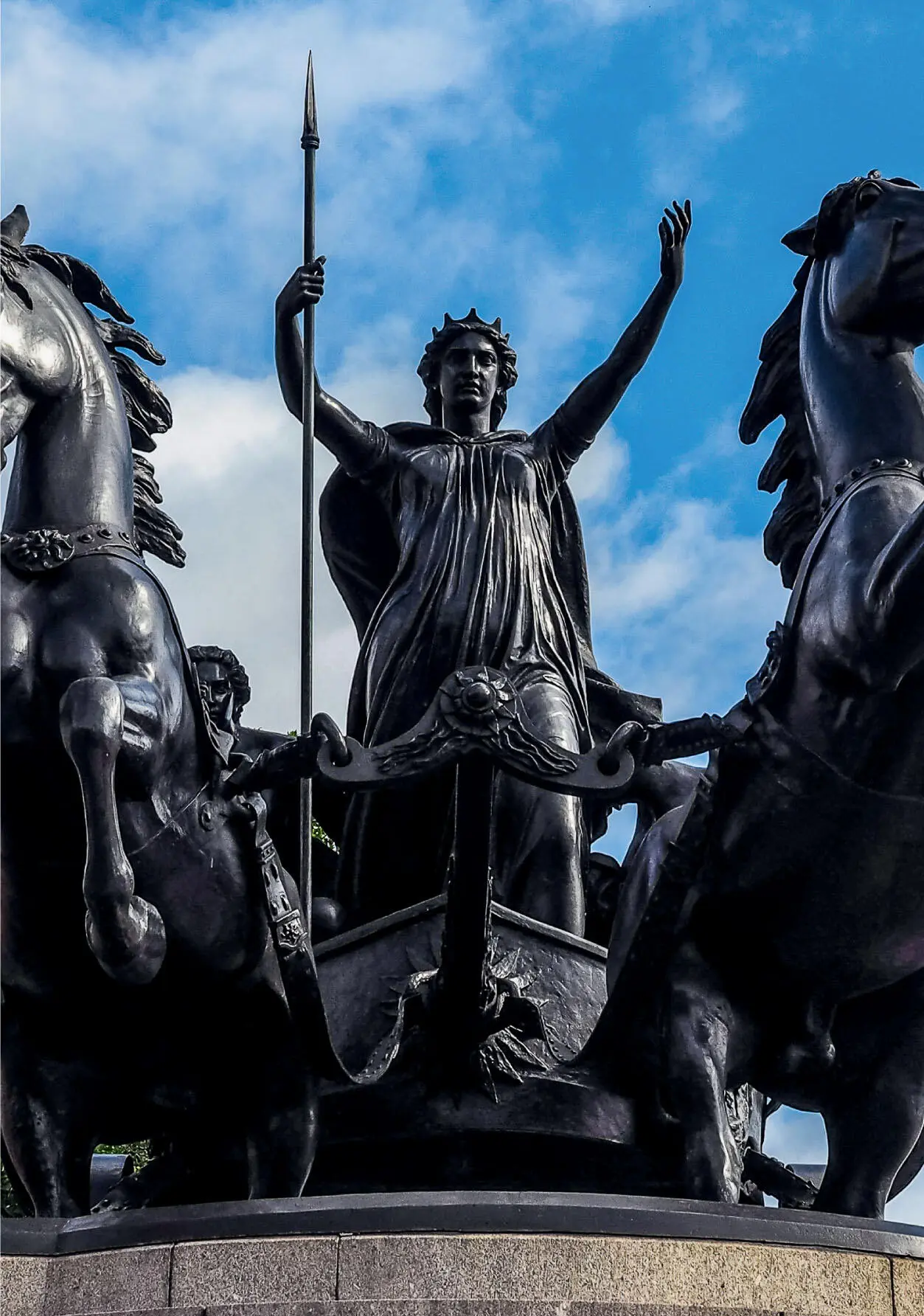
Claudio Divizia / shutterstock.com
410 | Legend of King Arthur
By the 5th century, Rome was under attack from the barbarian tribes of northern Europe. In 410, the Roman Emperor ordered Roman legions stationed in Britain to abandon the country and return to Rome to help in the city’s defence. A small population of Romano-British citizens were left in Britain, but they were unable to defend themselves from a new invasion force from Northern Germany attacking Britain’s shores – the Anglo-Saxons.
Читать дальше
